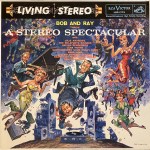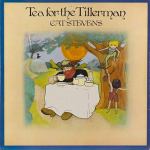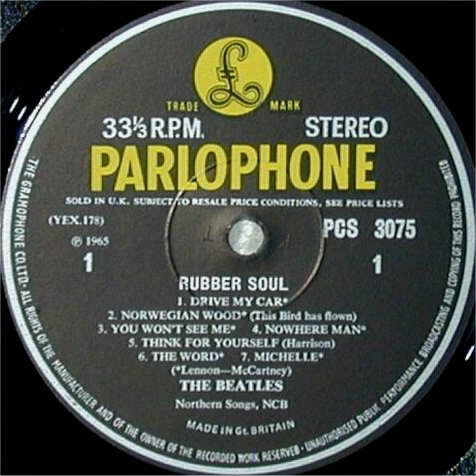
More of the Music of Fleetwood Mac
More Reviews and Commentaries for Rumours
One of our good customers played some Hot Stamper pressings for a friend of his and wrote to tell us about the experience.
Dear Tom,
There’s some fascinating sociology here with how contentious your business model is. It really tweaks people.
I recently made a friend who’s always been a vinyl enthusiast. He’s got a fantastic collection. My friend has worked with Steve Hoffman on a few projects in the past, and holds him in very high regard, both professionally and personally.
We got together over Thanksgiving and I brought along my hot stampers. We listened to them on his gorgeous Linn stereo. One by one, he could appreciate the differences in them, and confirm what I was hearing.
I put my Rumours hot stamper and then his Steve Hoffman remaster. I put my Mahavishnu alongside his first UK pressing. I played my Abraxas Hot Stamper against the MoFi OneStep, which he had heard of, but never actually heard.
We debated the sonic merits of each, noting the different decisions that different mastering engineers had made. In all cases, he heard what there was to like about the hot stampers. Despite the evident sonic differences, which we could both hear and agree to, we disagreed over whether that meant Better Records was really on to something.
My friend’s reasons to resist becoming a customer really had nothing to do with the listening experience we had just shared. “Tom likes forward-sounding records, mastered for FM broadcasts. Steve masters for home stereos.”
Or, “a 1A-1A pressing that’s been well cared for will sound the best by definition because that’s closest to what the artists intended.”
Or, “Tom says there’s variance from one biscuit to the next. That’s clearly absurd.”
All this, despite having heard the records! Now, to my friend’s credit, he did allow that he might have a look at the site and try one out, if a record he really loves pops up at a reasonable price. (As far as I know, he hasn’t done it yet…)
Anyway, I had to agree with him – your business model makes no sense in light of all our preconceptions about how to find great sounding records.
And, even when you hear hot stampers for yourself, the defensive walls still stay up. It’s possible to deny what you’re hearing.
Aaron
Aaron,
A quick note about 1A/1A. There was a time when we might have had 6-8 original pressings of a title, some 1A’s, some 1B’s etc. I would have loved to have let you borrow them and have your friend spot the 1A pressing, since it’s “the best.”
It is of course impossible to do that, but then you just lose friends when you embarrass them that way, and who cares what somebody else likes or doesn’t like, thinks or doesn’t think about records? I sure never did. The records sound the way they sound. Opinions, as you found out for yourself, have been known to vary.
Hoffman’s fans are true believers. Try blindfolding the guys on his forum and playing them a variety of pressings, of his stuff and others. They would not do a good job of knowing which is which by ear, which are the ones you’re supposed to like and which are the ones that shouldn’t sound good, your friend included.
But most audiophiles will never submit to this test because the rug might be pulled out from under them. That is a risk they cannot take. The only tests they are willing to submit to are the ones where they know what the answers are in advance, and, to make matters worse, the only answers they will accept are the ones guaranteed to corroborate their biases and prejudgments.
When Geoff Edgers of The Washington Post wanted to test me with a batch of mystery pressings, I said “Bring it on. I do this for a living, and I’ve been at it for twenty years. I know good sound when I hear it.” He went on to play me two of the best sounding Heavy Vinyl pressings I have ever heard (here’s one of them), as well as some of the worst. (Reviews for those are coming, but there are only so many hours in a day and finding the motivation to critique mediocre Heavy Vinyl pressings is not easy when there are so many great records to write about.)
The book you see pictured below explains everything — and I mean everything — having to do with hot stampers and the one psychological trap that every audiophile must guard against above all others: motivated reasoning.
 Hoffman’s Rumours is simply not competitive with the right original pressings when played back on accurate and revealing equipment. I have personally done the demonstration for a number of people.
Hoffman’s Rumours is simply not competitive with the right original pressings when played back on accurate and revealing equipment. I have personally done the demonstration for a number of people.
No one with an open mind could fail to hear how much better the real thing is compared to his remastered modern version. His is a good record. Our top copies are great ones, amazing even — at least that’s what our customers tell us.
That comparison, should you wish to do your own, would show you how much more energy the band had in 1977 than was left in the tank by 2009.
Same band, same tape, clearly different energy level. We all know the story of where that passion came from during the troubled recording of the album in 1977. How some portion of it was lost by the time Hoffman’s record came out in 2009 is the story that no one seems to want to talk about.
Certainly the heavy vinyl crowd doesn’t want to hear about it. Some might even talk themselves into believing that all that passion may have been good for FM radio broadcasts but would surely be less appropriate for home stereos.
A Different Approach
I have not been a True Believer since I extricated myself from the Fulton audio cult I was in all through the 70s. Since then I have taken to heart the opposite philosophy and approach, a purely evidence-based one. It has helped me achieve things in audio that I would have never achieved otherwise.
The scientific method works. I do not believe anything else does. There is no shortage of theories out there in audio land, and when we put them to the test, we often find out just how silly they are. We happily share the data with our readers on this very blog, which, of course, you can read to your heart’s delight free of charge.
You will not make many friends pointing these things out to your fellow audiophiles. Eventually they will want to burn you at the stake. Such is the way of all heretics, myself included, perhaps especially. (I’m not sure what stage of truth we are at, but it is definitely not stage three.)
As the only real skeptic who ever became an audiophile record dealer — which seems to be more of a contradiction in terms with each passing year — I can’t take credit for being scientifically minded and requiring evidence for the things I believe. It’s simply the way I am and have been as far back as I can remember.
I also do my best not to make excuses and come up with flimsy rationalizations when the evidence shows that what I wanted to believe turns out to be wrong.
Based on my forty years of experience in the audio game, I believe that no one can succeed who does not approach audio and records skeptically. I implore everyone to test this proposition for themselves and let the evidence be your guide.
As for taking a chance on Hot Stampers, you do get your money back if you don’t see things our way. But apparently even that is not enough for most audiophiles.
(more…)





 Basic Concepts and Realities Explained
Basic Concepts and Realities Explained




